If you’re a home cook, chances are that you’ve seen butchers twine used in recipes.
This thick cotton string is often used to tie together roasts and other large cuts of meat, as well as truss poultry for even cooking.
But what if you don’t have access to butchers twine?
Or maybe it just isn’t the right tool for the job?
Fortunately, there are several great substitutes for butchers twine that will get the job done just as well.
From kitchen staples like dental floss and thread to unexpected items like zip ties and ribbon, here are 10 of the best substitutes for butchers twine.
What is Butchers Twine?
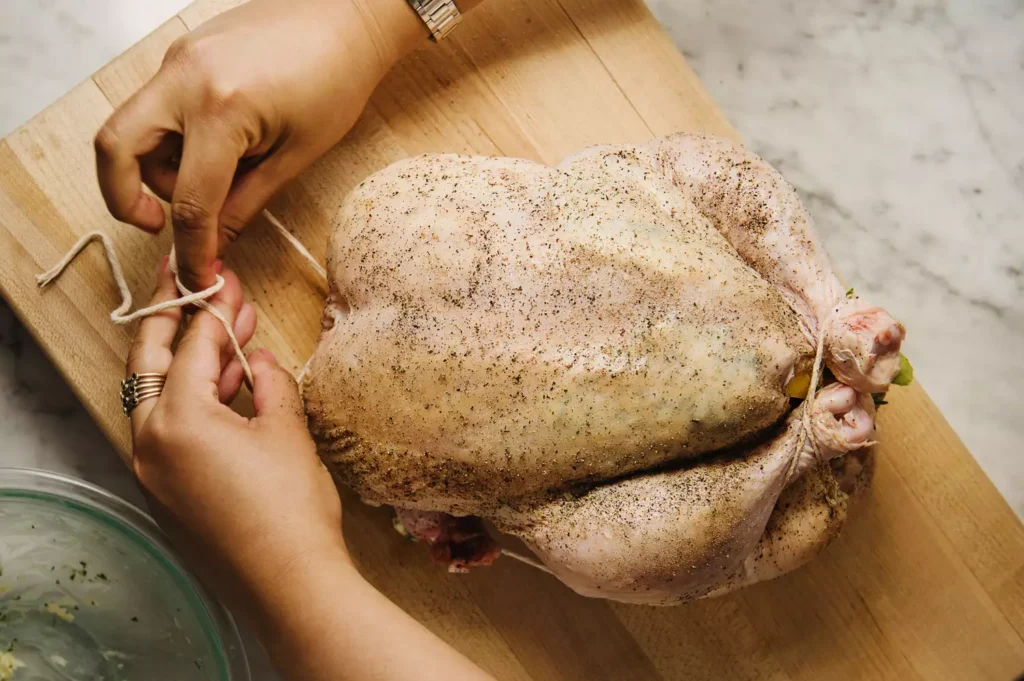
Butchers twine, also known as kitchen string or cooking twine, is a thin cotton cord used for tying and trussing meats.
It’s usually white in color and made of 100% natural cotton fibers that are twisted together to form a strong yet flexible cord.
The most common use for butchers twine is to tie up roasts before they go into the oven so that they cook evenly and hold their shape.
This helps keep the juices inside the meat while it cooks, resulting in a more flavorful dish.
Butchers twine can also be used to secure stuffing inside poultry or other meats, tie herbs together for bouquets garnis, hang sausages from racks during smoking or drying processes, and even make decorative knots on top of pies or tarts.
Butchers twine comes in various thicknesses depending on its intended purpose; thinner strings are better suited for delicate tasks such as tying herbs together while thicker strings are better suited for heavier tasks such as trussing roasts.
When selecting butchers twine it’s important to choose one that is food-safe and non-toxic since it will come into contact with food during cooking processes.
The 10 Best Substitutes For Butchers Twine
Butchers twine is a handy tool for tying up cuts of meat, but it can be hard to find in some places.
If you’re looking for an alternative, here are ten substitutes that will still get the job done:
1 – Toothpicks
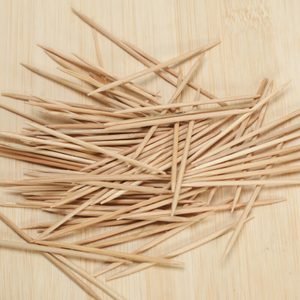
Toothpicks are small wooden or plastic sticks used to remove food particles from between teeth after a meal.
They can also be used as an alternative to butchers twine in the kitchen.
Toothpicks can be used to hold together roasts, poultry, and other meats while cooking.
They can also be used for trussing vegetables like onions and peppers before grilling them on the barbecue.
Toothpicks are easy to use and come in many sizes and colors, making them a great choice for any kitchen task that requires precision.
Plus, they’re inexpensive and widely available at most grocery stores.
2 – Wooden Skewers
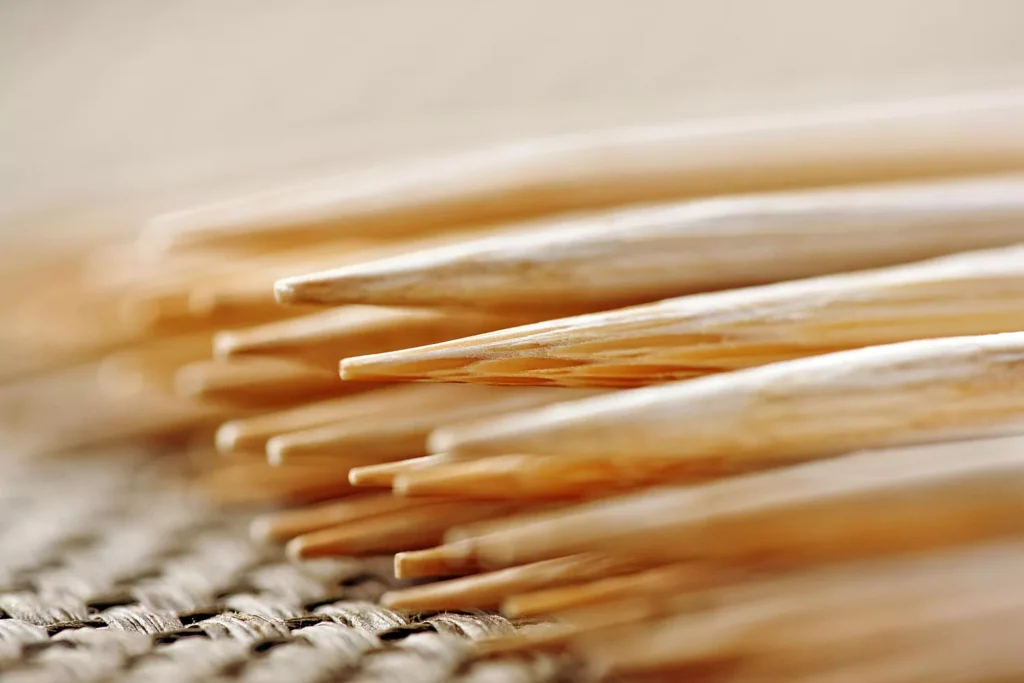
Wooden skewers are a great alternative to butchers twine when it comes to cooking.
They can be used for grilling, roasting, and baking.
Wooden skewers are ideal for kebabs, as they hold the food securely in place while allowing even heat distribution on all sides of the skewer.
Wooden skewers come in different sizes and shapes, so you can choose one that best fits your needs.
For example, long wooden skewers are perfect for grilling large pieces of meat or vegetables like bell peppers or mushrooms.
Short wooden skewers work well with smaller items such as shrimp or cubes of cheese.
Pro Tip: Soak your wooden skewers in water before using them to prevent them from burning during cooking!
3 – Silicone Cooking Bands

Silicone cooking bands are a great alternative to butchers twine for tying up roasts, poultry, and other meats.
They are made from food-grade silicone that is heat resistant up to 500°F (260°C).
Silicone cooking bands are reusable and can be used in the oven or on the grill.
Silicone cooking bands provide an even pressure around the roast, ensuring it cooks evenly and stays together during cooking.
They also help keep moisture in while preventing fat from dripping out of the meat.
Plus, they’re easy to use – just wrap them around your roast and secure with a knot!
Pro Tip: For extra flavor, you can add herbs or spices directly onto the silicone band before wrapping it around your roast!
4 – Aluminum Foil

Aluminum foil is a thin sheet of aluminum metal that can be used for many different purposes.
It is often used in cooking to wrap food, keep it warm, and prevent it from burning or drying out.
Aluminum foil can also be used as an alternative to butchers twine when tying up roasts or poultry.
When using aluminum foil instead of butchers twine, make sure the edges are securely sealed so that no juices escape during cooking.
Additionally, use multiple layers of foil if needed to ensure the roast stays tightly bound together while cooking.
Pro Tip: To get extra crispy skin on your roast chicken, try wrapping the entire bird in aluminum foil before roasting! This will help trap moisture and steam inside the bird while it cooks, resulting in juicy meat and perfectly crisp skin!
5 – Green onions
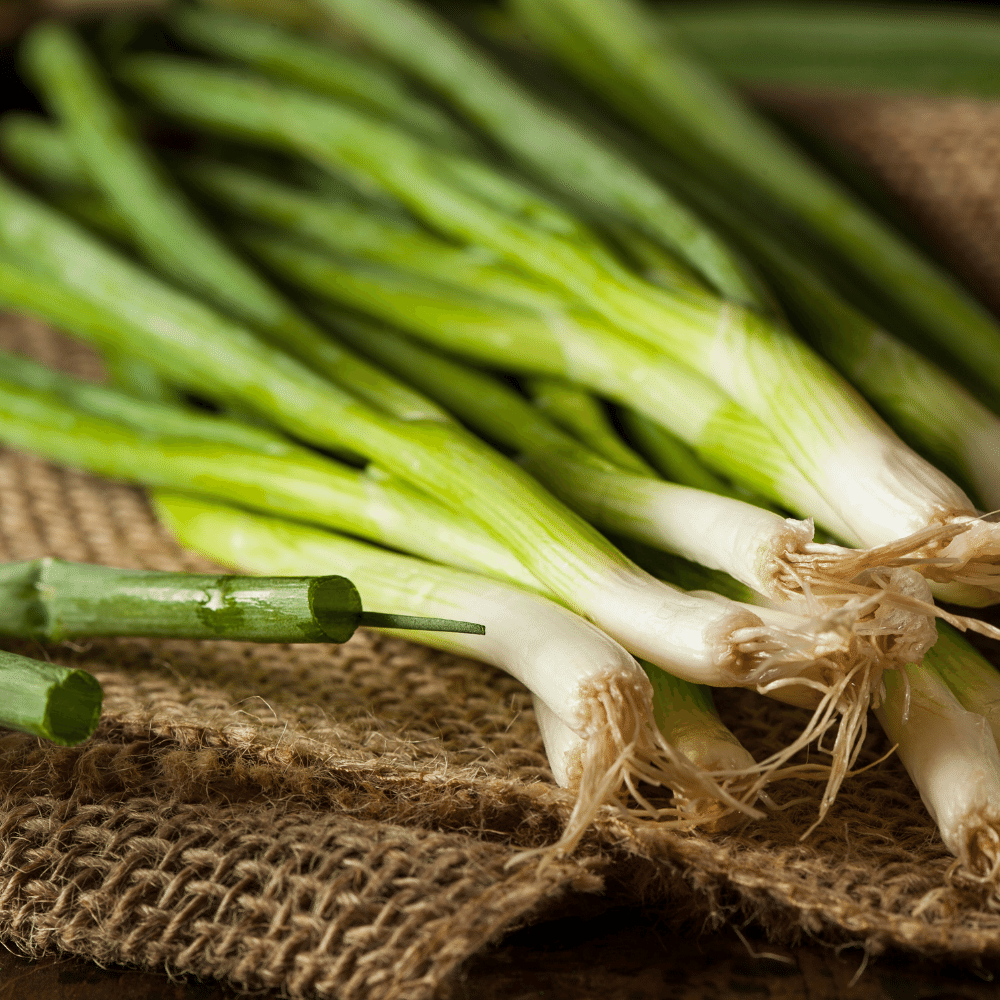
Green onions, also known as scallions or spring onions, are a type of onion that is harvested before the bulb has had a chance to fully mature.
They have a milder flavor than regular onions and can be eaten raw or cooked.
Green onions are often used in salads, soups, stir-fries and other dishes for their fresh flavor and crunchy texture.
They can also be grilled or roasted for an added depth of flavor.
Pro Tip: To get the most out of your green onions, use them within two days of purchase! Store them in the refrigerator with the roots still attached to keep them fresher longer.
6 – Oven Bags (Roasting Bags)
Oven bags, also known as roasting bags, are a great alternative to butchers twine.
They are made from heat-resistant nylon and can be used to cook meats, poultry, fish and vegetables in the oven.
Oven bags help keep food moist while cooking and reduce the amount of fat that needs to be added for flavor.
Oven bags are easy to use – simply place your ingredients inside the bag with some liquid (such as broth or wine), seal it up with a twist tie or clip, then place it in an oven preheated to 375°F (190°C).
The bag will trap steam inside which helps keep food tender and juicy while cooking.
After about 30 minutes of cooking time, you’ll have perfectly cooked meals every time!
7 – Cheesecloth

Cheesecloth is a lightweight cotton cloth used for straining liquids and wrapping food.
It’s also known as butter muslin or gauze, and it can be found in most grocery stores.
Cheesecloth is made from loosely woven cotton fabric that has been bleached to make it white.
Cheesecloth is an excellent substitute for butchers twine when tying up roasts, poultry, or other meats before cooking them.
The cheesecloth will keep the shape of the roast while allowing moisture to escape during cooking, resulting in a juicy and flavorful dish.
It can also be used to wrap herbs or spices for making bouquets garnis or sachet d’epices.
8 – Baking Paper (Parchment Paper)
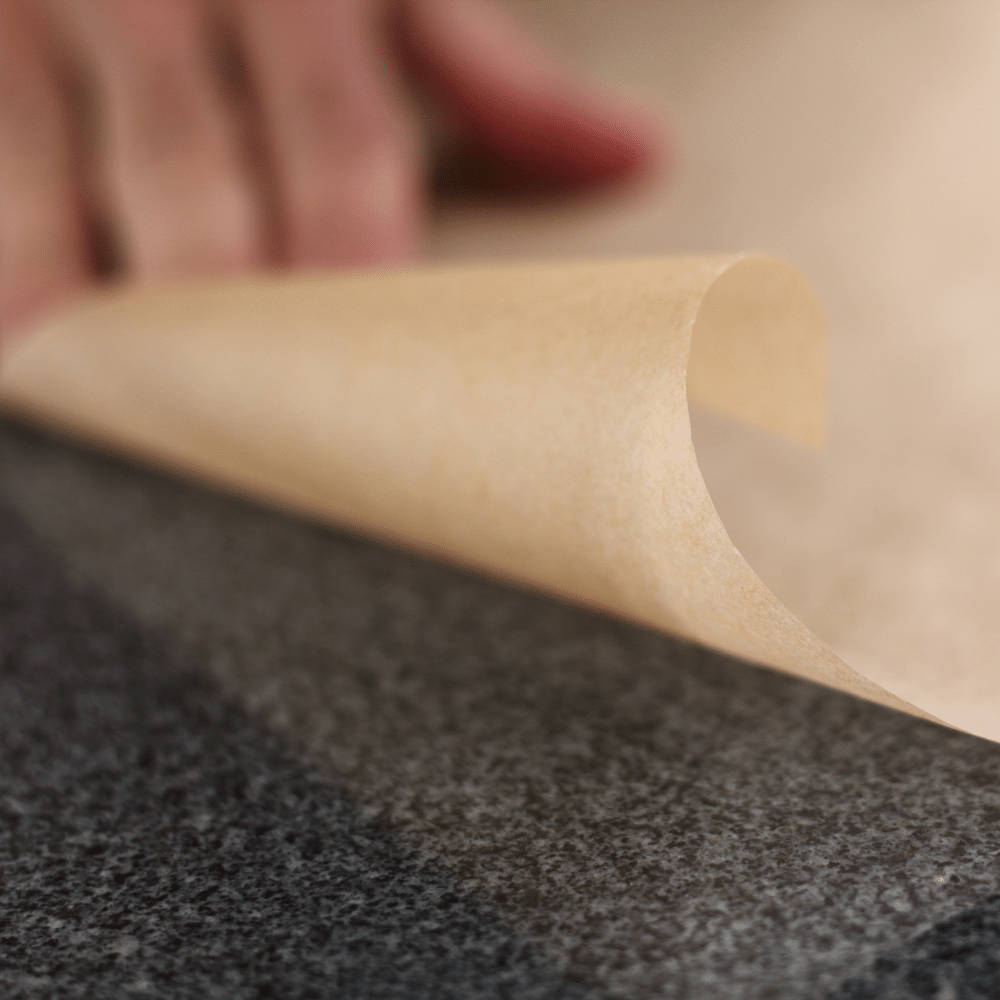
Baking paper, also known as parchment paper, is a type of paper specifically designed for baking.
It’s heat-resistant and non-stick, making it ideal for lining baking trays and cake tins.
Baking paper can also be used to wrap food before cooking or storing in the freezer.
Baking paper is great for wrapping up sandwiches and other snacks that you want to keep fresh until lunchtime.
It’s also perfect for rolling out doughs like pastry or pizza bases as it prevents them from sticking to the work surface.
And if you’re feeling creative, you can use it to make your own decorative cupcake wrappers!
9 – Dental Floss (Although not recommended)
Dental floss is a thin, thread-like material used to remove food particles and plaque from between teeth.
It can also be used as an alternative to butchers twine for tying up meats or poultry before cooking.
Although dental floss is not recommended for use in the kitchen due to its potential health risks, it can be used in a pinch if you don’t have access to butchers twine.
Dental floss is strong enough to hold the meat together while cooking, however it should be removed before serving as it may contain bacteria that could cause illness.
Pro Tip: If using dental floss instead of butchers twine, make sure you use unflavored varieties so that your food doesn’t take on any unwanted flavors!
10 – Cook Without It
Cooking without butcher’s twine is possible, and can be a great way to get creative in the kitchen.
One option is to tie ingredients together with herbs like rosemary or thyme, which will add flavor while keeping your dish intact.
FAQ
Can you use normal string instead of butchers twine?
Yes, it is possible to use normal string instead of butchers twine when trussing and hanging meats.
Kitchen string made of 100% natural cotton is ideal and can be purchased from kitchen stores or online.
Cotton string is strong enough to securely hold the meat together and is suitable for trussing virtually any type of meat, including whole chickens.
When using a fire to roast your meat, it is important to ensure that the string is long enough to hang the meat at a safe distance from the heat.
Can you use floss instead of butchers twine?
No, it is not recommended to use floss instead of butchers twine. Butchers twine is specifically designed for butchering and cooking, and is usually made from cotton, linen, or jute.
These materials are designed to withstand high temperatures, and the fibers of floss are not. Furthermore, dental floss is usually waxed or flavored, which could create an undesirable flavor or texture in cooked food items.
For these reasons, it is best to use butchers twine or other USDA-certified food and heat safe synthetics such as nylon when cooking.
An exception to this rule is if you are using unwaxed and unflavored dental floss in a recipe such as a Thanksgiving turkey or a three-layered chocolate cake.
What string can I use to tie a roast?
Butcher’s twine (also referred to as cooking string or kitchen twine) is the perfect choice for tying a roast. This oven-safe string is made from 100% cotton and is strong enough to hold a stuffed or unevenly shaped roast securely.
It also helps create a uniform shape that ensures the roast cooks evenly. When using butcher’s twine, it’s important to tie the roast snugly but not overly tight; this will help to keep the roast’s shape while allowing air to circulate.
Before serving, make sure to remove the twine from the roast so that it doesn’t end up on anyone’s plate.
Conclusion
In conclusion, butcher’s twine is an essential tool for many cooks, but if you don’t have any on hand, there are several other options that can get the job done.
Some of the best substitutes for butcher’s twine include toothpicks, wooden skewers, silicone cooking bands, aluminum foil, green onions, oven bags, cheesecloth, and baking paper. Each of these alternatives can be used to truss a roast or to tie up a bundle of herbs.
No matter which substitute you choose, you can rest assured that your meal will come out delicious and perfectly trussed.
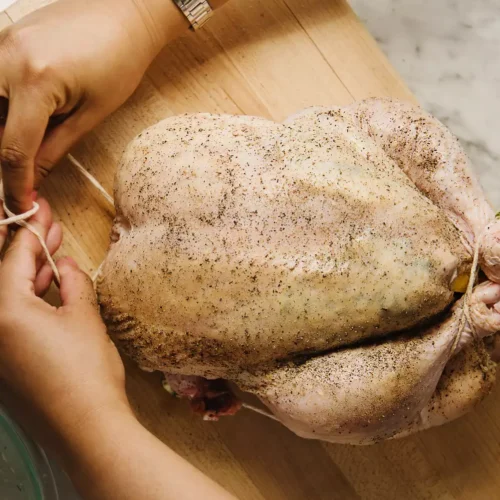
The 10 Best Substitutes For Butchers Twine
Ingredients
- Toothpicks
- Wooden Skewers
- Silicone Cooking Bands
- Aluminum Foil
- Green onions
- Oven Bags (Roasting Bags)
- Cheesecloth
- Baking Paper (Parchment Paper)
- Dental Floss
- Cook Without It
Instructions
- Pick your favorite substitute from the list above.
- Follow cooking directions for your selected substitute with the proper ratio of ingredients.
Hi, I'm Benjamin. I love cooking, long walks, and my girlfriend! Here you’ll find simple and delicious recipes that you can make in 30 minutes or less.

